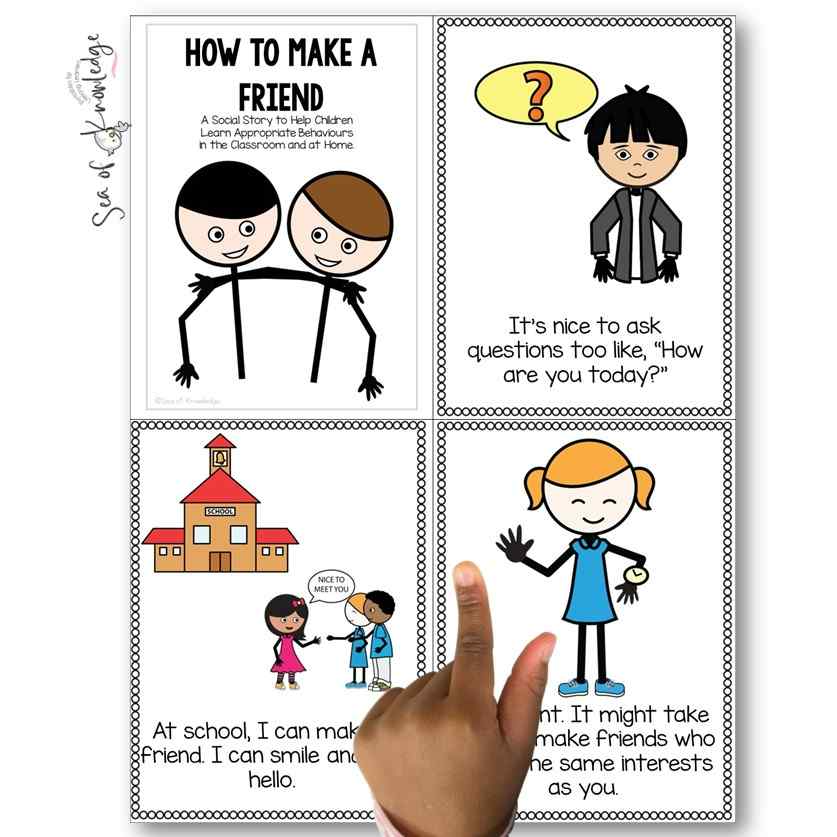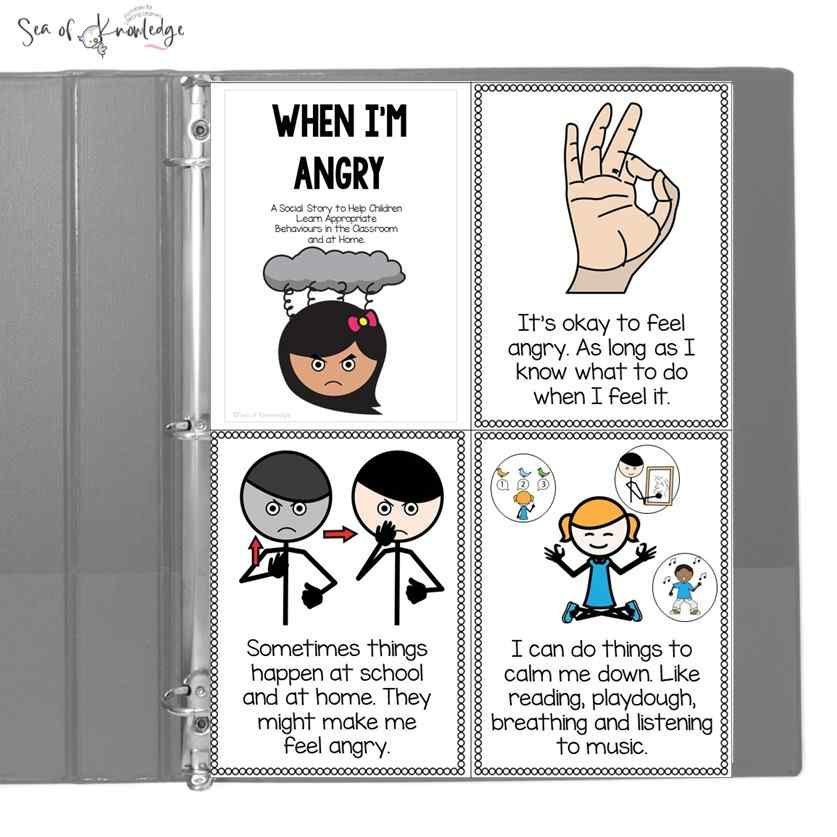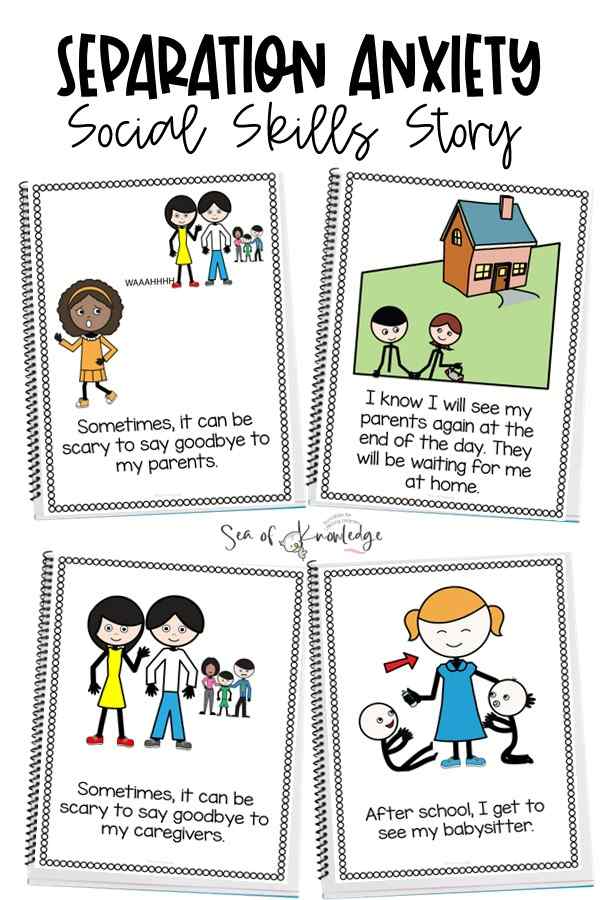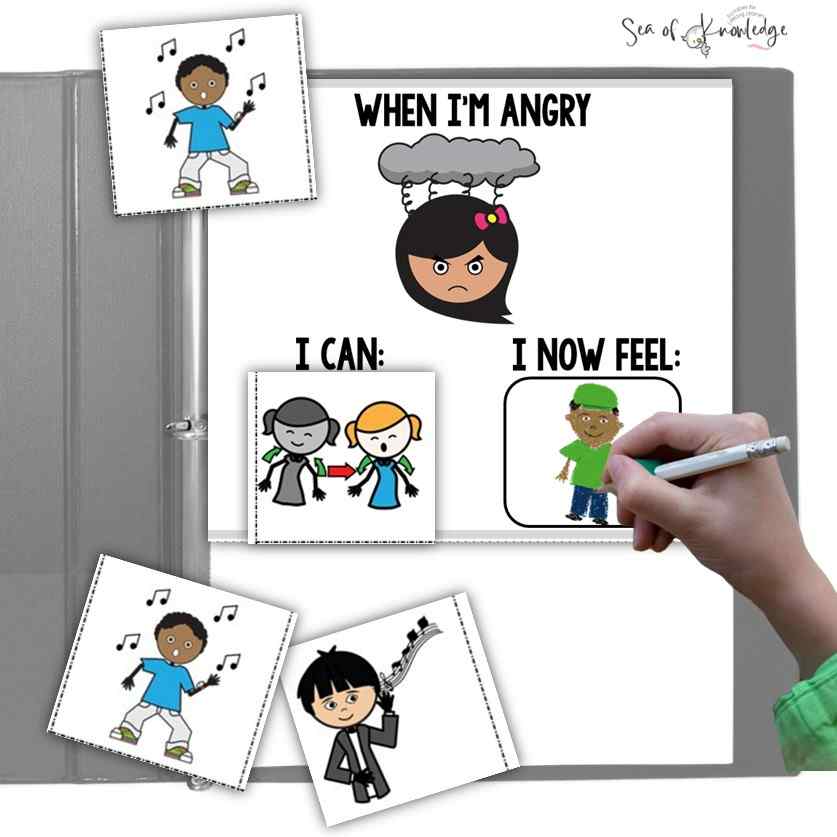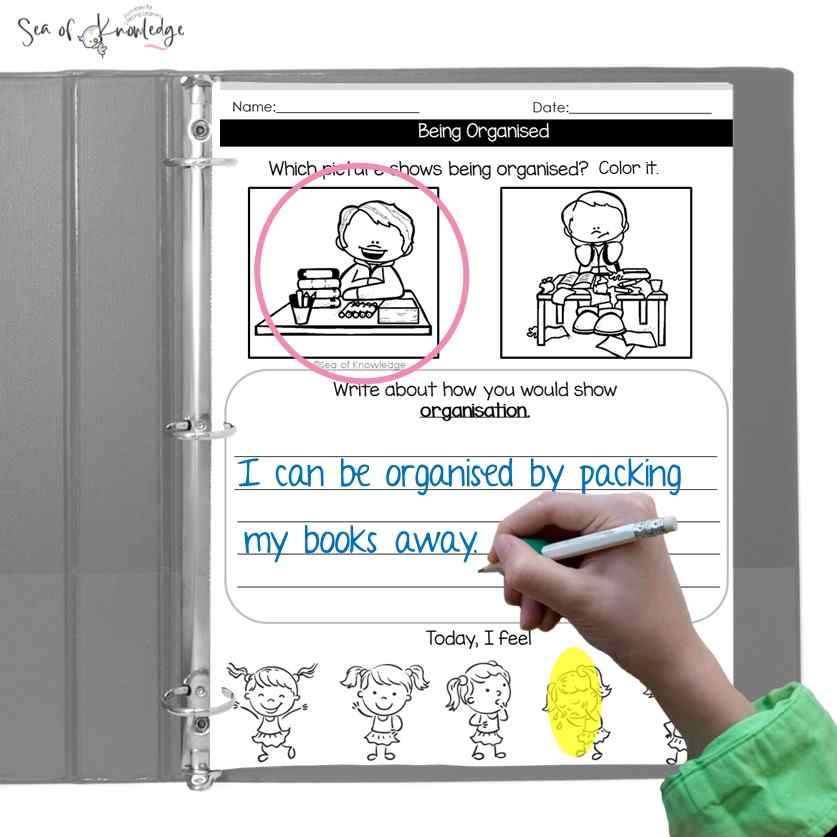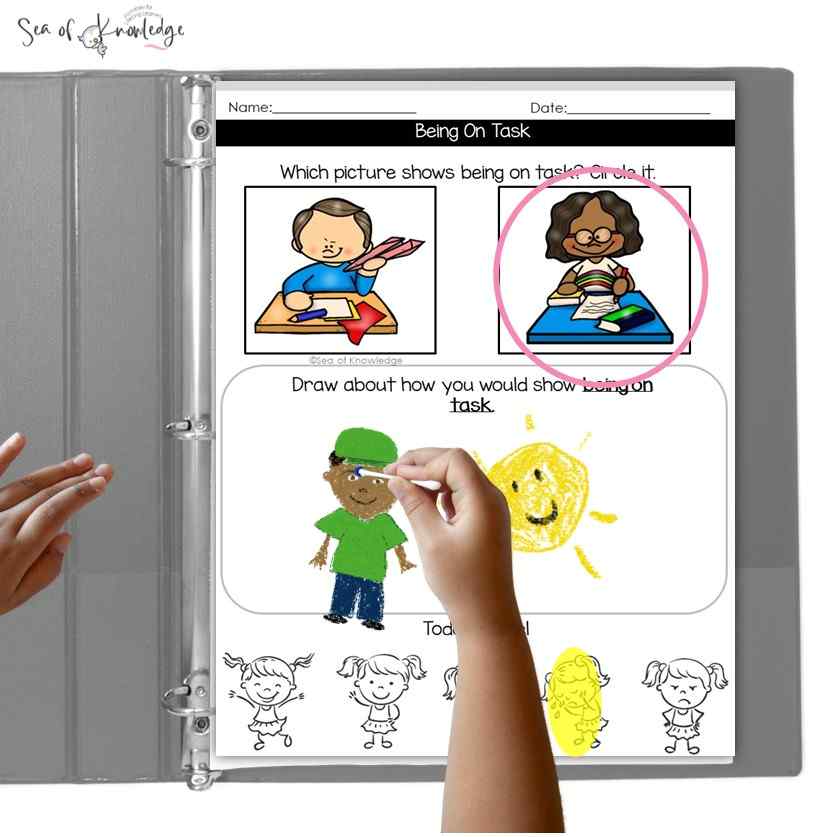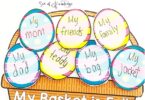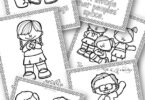For many children, riding the bus to school is a significant milestone, marking a step towards independence and responsibility. This super fun and simple riding the bus social story pack is a great way to help further enhance their understanding!
Social emotional learning activities are so important for kids
However, with this newfound freedom comes the need to learn proper riding the bus etiquette and safety guidelines.
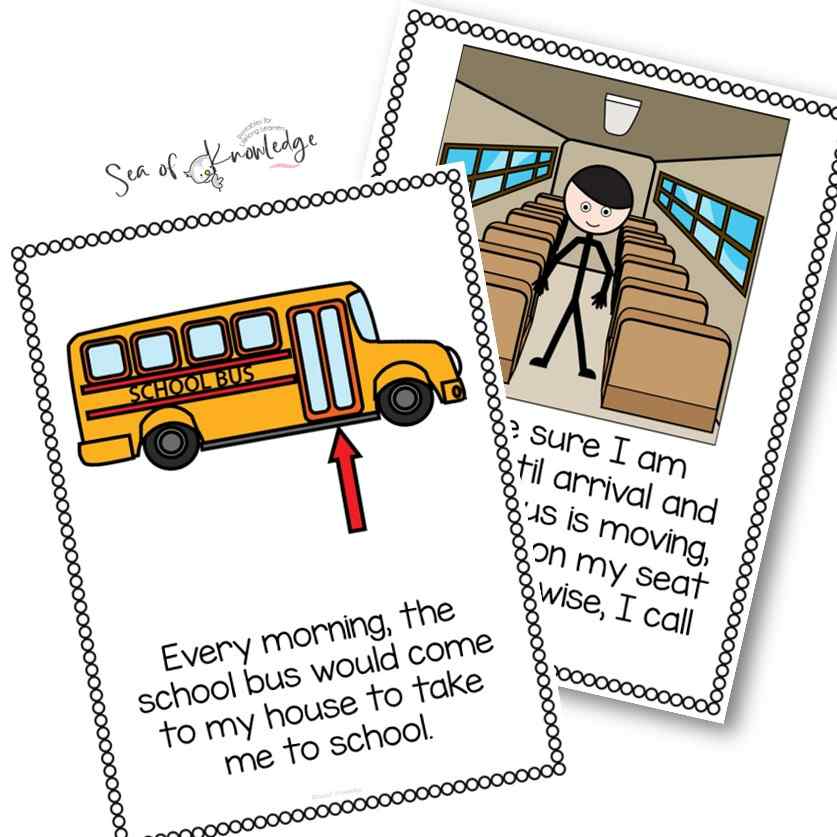
In this blog post, we explore the importance of teaching kids about riding the bus safely, provide valuable ideas for educators to instil these lessons effectively, and present a downloadable printable riding the bus social story to aid in the learning process.
Why Do Kids Need to Learn About Riding the Bus Safely?
Learning about riding the bus safely is of paramount importance for several reasons:
Safety First: The safety of children is the top priority when they are commuting to and from school. Understanding proper bus etiquette and safety guidelines ensures a secure and incident-free journey.
Responsible Citizenship: Teaching kids to be respectful passengers on the bus fosters a sense of responsible citizenship. It encourages them to treat public spaces with care and consideration.
Building Confidence: Knowledge of safe bus practices empowers children with confidence, enabling them to feel comfortable and self-assured during their daily commutes.
What Are Some Things Teachers Can Do to Help Kids Learn to Ride the Bus Safely?
Educators play a crucial role in imparting bus safety lessons to their students. Here are some effective strategies they can employ:
Interactive Discussions: Initiate classroom discussions about the importance of bus safety. Encourage children to share their experiences and concerns, fostering an open dialogue.
Visual Aids: Utilize visual aids such as posters, charts, and videos to illustrate proper bus behavior and safety protocols. Visual cues enhance comprehension and retention.
Role-Playing: Engage students in role-playing scenarios where they practice appropriate bus etiquette, including how to sit, communicate, and interact with fellow passengers.
Field Trips: Organize educational field trips to bus terminals or stations, where students can observe and learn about bus safety practices firsthand.
Guest Speakers: Invite guest speakers, such as bus drivers or safety experts, to share insights and stories that emphasize the significance of safe bus behavior.
What Are Riding the Bus Safety Guidelines for Kids?
Instilling a set of clear and concise safety guidelines is essential for teaching kids about riding the bus safely. Here are some fundamental rules to emphasize:
Wait Safely: Teach children to stand at a designated bus stop or sidewalk, away from traffic, while waiting for the bus. Caution them against playing near the road.

Boarding the Bus: Instruct students to form a line and wait their turn to board the bus. Remind them to maintain distance and avoid pushing or shoving.
Seating: Encourage children to find a seat promptly and remain seated for the duration of the ride. Explain the importance of not distracting the bus driver.
Seat Belts (if applicable): If seat belts are provided on the bus, teach kids to fasten them correctly and keep them on until the bus comes to a complete stop.
Exiting the Bus: Educate students about the proper way to exit the bus, emphasizing the importance of looking both ways before crossing the street and using crosswalks.
Role-Playing Riding the Bus Scenarios: Fostering Safe and Responsible Behavior
Role-playing is an effective and engaging teaching method that allows kids to practice real-life situations in a controlled environment.

When it comes to teaching children about riding the bus safely and responsibly, role-playing can be an invaluable tool.
In this section, we’ll explore how educators can utilize role-playing scenarios to instill proper bus etiquette and safety guidelines, along with example scripts for teachers to use.
Scenario 1: Boarding the Bus
*Objective: Teach students the importance of forming a line, waiting their turn, and boarding the bus in an orderly manner.*
>>> Get the full riding the bus printable social story pack here <<<
Teacher: “Alright, class, let’s practice how we should board the bus. Imagine we’re at the bus stop, and the bus has just arrived. I’ll play the role of the bus driver. Who wants to be the first student to board?”
Student A: “I’ll be the first one!”
Teacher: “Great! Now, as you approach the bus, remember to stand in line and wait your turn. Let’s see how you do.”
*Student A approaches the “bus” (designated area) and stands in line. Other students watch and wait.*
Teacher: “Excellent, Student A! You’ve shown us how to wait patiently in line. Now, who’s next?”
Scenario 2: Finding a Seat
*Objective: Teach students how to find a seat promptly, choose an appropriate seat, and remain seated during the ride.*
Teacher: “Now, let’s practice finding a seat on the bus. Student B, you’re going to board the bus this time. When you get on, choose a seat and show us how you sit down.”
*Student B approaches the “bus,” boards, and selects a seat.*
Teacher: “Good job, Student B! You found a seat quickly and sat down safely. Remember, we want to be respectful passengers and not disturb the driver while the bus is moving.”
**Scenario 3: Exiting the Bus**
*Objective: Teach students the proper way to exit the bus, including looking both ways before crossing the street and using crosswalks.*
Teacher: “Now, let’s practice how to exit the bus safely. Student C, you’re going to be getting off the bus this time. Show us how you exit and cross the street.”
*Student C approaches the “bus” exit, waits for the door to open, and exits. They then look both ways, cross an imaginary street, and use a designated crosswalk.*
Teacher: “Well done, Student C! You remembered to look both ways before crossing the street and used the crosswalk. That’s exactly what we need to do to stay safe.”
**Scenario 4: Communicating with the Bus Driver**
*Objective: Teach students how to communicate politely and clearly with the bus driver when needed.*
Teacher: “Lastly, let’s practice how to communicate with the bus driver. Student D, you’ll play the role of a student who needs to ask the bus driver a question.”
*Student D approaches the “bus driver” (teacher) and asks a question.*
Student D: “Excuse me, can I ask when we’ll arrive at my stop?”
Teacher: “Great job, Student D! You asked your question politely and waited for a safe time to talk to the driver.”
Role-playing riding the bus scenarios is a dynamic and interactive approach to teaching kids about proper bus etiquette and safety guidelines.
By immersing students in realistic situations, educators can help them practice and internalize essential behaviors for a safe and respectful bus ride.
The example scripts provided in this section offer a starting point for teachers to create engaging role-playing activities that enhance children’s understanding of responsible bus behavior.
As children step into the roles of passengers, they develop not only practical skills but also a sense of empathy, responsibility, and confidence as they prepare to ride the bus safely.
Printable Riding the Bus Social Story:
**Riding the Bus Social Story: A Helpful Tool for Teaching Kids Bus Etiquette and Safety Rules**
Navigating the world can be an overwhelming experience for young minds, especially when it comes to new and potentially intimidating situations like riding the bus. As educators and parents, we understand the importance of equipping children with the necessary tools to handle such situations confidently and safely. This is where social stories come into play – an effective and engaging method to teach kids about bus etiquette and safety rules.
What Are Social Stories?
Social stories are short, simple narratives designed to help individuals, particularly those with special needs, understand and navigate various social situations.
Developed by Carol Gray in the early 1990s, social stories use descriptive text and visuals to break down complex scenarios into smaller, manageable steps.
They offer a clear and structured way to explain social expectations, routines, and behavioral cues to children, making unfamiliar situations more predictable and less anxiety-inducing.
How Can You Use Social Stories in the Classroom?
Social stories are versatile tools that can be integrated into various educational settings.
In the classroom, teachers can use social stories to introduce and reinforce appropriate behavior and social skills. The stories can be read aloud to the whole class or shared individually with students who may benefit from targeted support.
Additionally, social stories can be presented through multimedia formats, such as digital presentations or printed booklets, to cater to different learning preferences.
Why Do Special Needs Kids Benefit from Social Stories?
Children with special needs often struggle with comprehending and adapting to new situations.
Social stories provide these children with a structured framework that helps reduce anxiety by offering a clear understanding of what to expect.
The repetitive nature of social stories reinforces important concepts and ensures consistent messaging, which is particularly valuable for children who thrive on routine and predictability.
By using visual cues and simple language, social stories create a supportive environment for special needs children to learn and practice essential life skills.
Riding the Bus Safety Rules for Kids
Before embarking on the journey of creating a riding the bus social story, let’s outline some fundamental bus safety rules for kids:
Arrive Early: Make sure you’re at the bus stop at least five minutes before the bus is scheduled to arrive.
Stand Back: Stay a safe distance away from the curb while waiting for the bus. This prevents accidents and ensures you’re visible to the bus driver.
Wait Patiently: Wait in an orderly line and avoid pushing or shoving. Board the bus calmly and follow the driver’s instructions.
Find a Seat: Once on the bus, choose a seat quickly and sit facing forward. Keep your belongings secure and out of the aisle.
Buckle Up (If Applicable): If seat belts are provided, make sure to fasten them properly.
Use Inside Voices:Talk quietly to avoid distracting the bus driver, who needs to concentrate on the road.
Respect Personal Space: Keep your hands and belongings to yourself, and be kind and considerate to fellow passengers.
Stay Seated: Remain seated during the entire ride until the bus reaches your stop. This ensures your safety and the safety of others.
Exiting the Bus: When your stop arrives, wait for the bus to come to a complete stop before standing up and leaving your seat. Use the handrail while walking down the steps and move away from the bus.
Look Both Ways: Before crossing the street, remember to look left, right, and left again to ensure it’s safe.
Printable Download: Riding the Bus Social Story
To further enhance the learning experience and engage young learners, we’ve created a comprehensive printable download that includes:
- Poster: Hang up a colorful poster in the classroom to remind students of the key bus etiquette and safety rules. The poster features vibrant visuals and simple text to reinforce the concepts.
- Simple Reading Story: The easy-to-read story provides a step-by-step narrative of riding the bus, complete with engaging illustrations. This story helps children visualize and internalize the proper behavior and safety guidelines.
- Mini Pages: These mini-pages can be distributed individually to each student. They can be used as reference guides or interactive activities to complete with the students. The mini-pages break down each rule into digestible parts, making it easier for children to remember and apply.
- Discussion Questions: Spark meaningful conversations in the classroom by using thought-provoking discussion questions related to bus etiquette and safety. This encourages children to think critically about the concepts presented in the social story.
By utilizing this printable download, educators can effectively instill valuable life skills in their students while making the learning process enjoyable and engaging.
The combination of visual aids, relatable narratives, and interactive activities empowers children to confidently navigate the bus journey and interact with their peers in a respectful and safe manner.
[Riding the Bus Social Story]Teaching kids about riding the bus safely is an essential aspect of their overall education and development.
By instilling proper bus etiquette and safety guidelines, educators and parents ensure that children embark on their daily journeys with confidence, respect, and responsibility.
The strategies discussed in this blog post, combined with the downloadable riding the bus social story, offer valuable tools to guide young learners toward becoming conscientious and safety-conscious passengers.
As we equip children with the knowledge and skills they need to ride the bus safely, we empower them to navigate the world around them with awareness and assurance.
The act of riding the bus is not merely a means of transportation; it’s a valuable opportunity for children to learn essential life skills, practice social etiquette, and ensure their own safety.
Social stories provide an innovative and effective method to impart these crucial lessons in an engaging and accessible way.
Through a carefully crafted riding the bus social story, complete with a printable download featuring a poster, reading story, mini pages, and discussion questions, educators can create a positive and empowering learning experience.
This tool not only helps children understand and adhere to bus etiquette and safety rules but also cultivates a sense of responsibility, respect, and confidence as they embark on their exciting bus adventures.
As we equip our young learners with these valuable skills, we empower them to navigate the world with courage, courtesy, and consideration for others.


